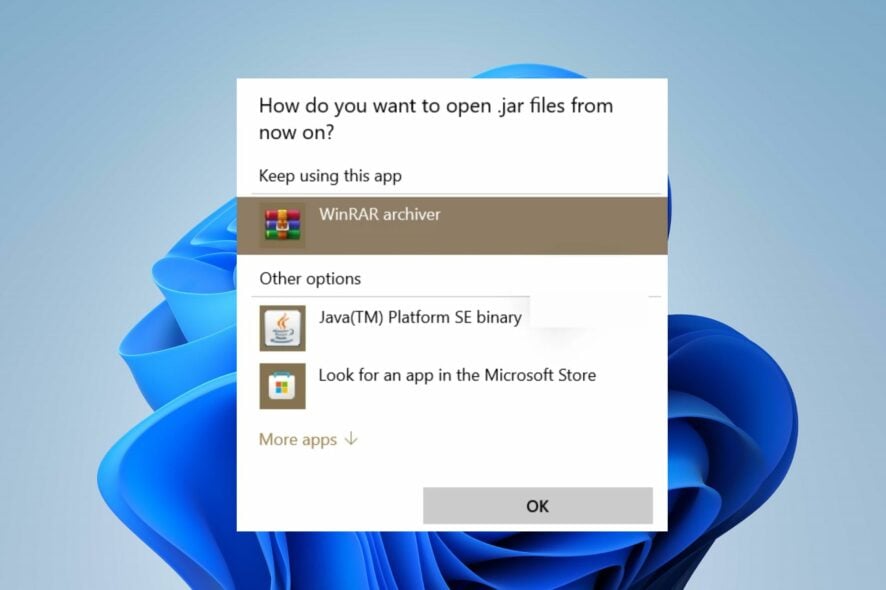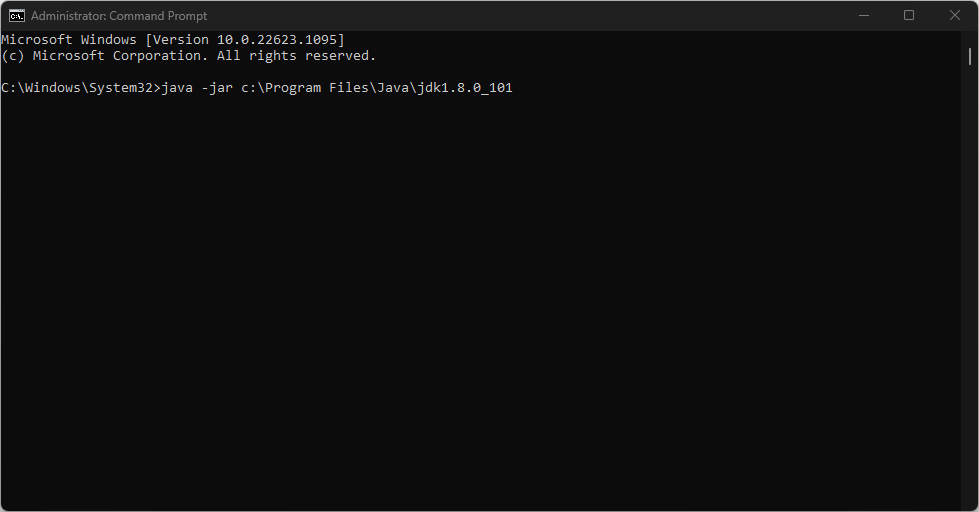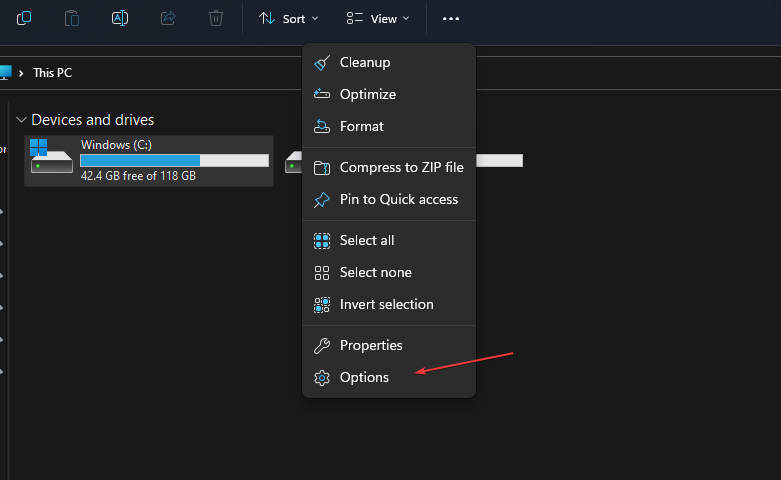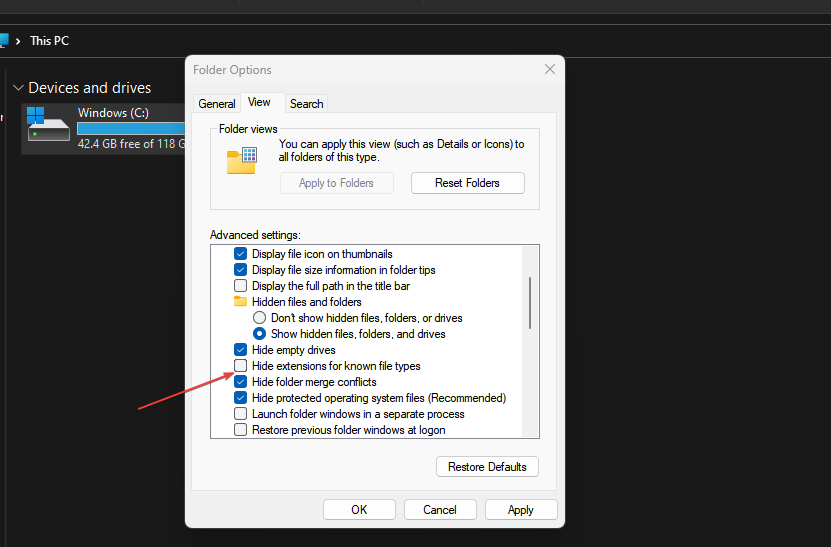How to Open JAR Files in Windows 11: 3 Easy Methods
A JAR file can be used to compress files
4 min. read
Updated on
Read our disclosure page to find out how can you help Windows Report sustain the editorial team. Read more
Key notes
- To open a JAR file on Windows 11 PC, users need to make sure that they download Java on their PC.
- The command-line tool is one of the major and fastest means for opening JAR files on Windows 11.
- The Java(TM) Platform SE binary can also enable users to open a JAR file with a simple double-click.

Some of our readers have recently requested to know the workarounds on how to open JAR files in Windows 11.
While this may be easy for some users, we have provided this simplified step-by-step guide. Ensure to work your way through any of the steps provided below.
What is a JAR file?
A JAR file is an archiving package format that stores directories and source files. JAR files are similar and can be run as executable files, however, they require the Java framework to run.
Although you can extract JAR with archiving software, you can’t run a pure Java JAR app as you would with other programs in Windows.
Simply, a JAR file contains a compressed version of .class files, audio files, image files, or directories.
How can I open JAR files in Windows 11?
If you don’t readily have Java on your PC, you’ll need to download it, as it is the only way a JAR file can run on Windows PC.
The following are some of the simple step-by-step instructions on how to open JAR files in Windows 11.
1. Use CMD to open a JAR file
- Left-click on Start on your Taskbar, type cmd in the Search box, and choose Run as administrator from the options to run Command Prompt with full privileges.
- Then type the following command line in the text field:
java -jar c:\pathtojarfile.jar - Make sure to replace pathtofile in the example above with the actual path of the file you need to run. Next, press Enter.
- The executable JAR file will then be opened if it contains a manifest file that specifies the application’s entry point (the developers should have already included that in the archive).
The command-line program is essential for installing and debugging apps, but if it doesn’t work, find out how to fix Command Prompt in Windows.
2. Double-click to open a JAR file on Windows 11
- Press the Windows + E keys to start File Explorer.
- Navigate to the folder where the JAR file(s) you need to run.
- Next, right-click on the JAR file you wish to open and select Open with from the context menu.
- Then, select Choose another app.
- From the list of options, select Open with and choose Java(TM) Platform SE binary.
- Next, click the Always use this app to open .jar files checkbox, then press the OK button to close the menu.
Now you can open the selected JAR, and all other JAR files in Java by merely double-clicking on them.
3. Create a .bat file
- Press the Windows + E keys to launch File Explorer.
- Tap on the three-dots menu icon from the options at the top. From the drop-down options, select Options.
- Select the View tab from the Folder Options window’s menu when it appears.
- Scroll down to Hide extensions for known file types under Advanced settings, and then uncheck the box next to it.
- Click OK to save the changes. The file names will now include the file extensions as well.
- Navigate to the folder containing your JAR file now, launch Notepad there, and enter the following text:
java -jar yourfilename.jar - Make sure to substitute the name of the.jar file for your file name.
- Save the file with the .bat extension.
After following the above steps, every time you double-click the BAT file, it will take you to the JAR file and run it accordingly.
And that’s how to open or run JAR files in Windows 11. Alternatively, users can install a third-party JAR executor to Windows 11 by visiting the JARX website to download the Jarx-1.2-installer.exe file.
You can also check our detailed guide on other software for opening JAR files.
Additionally, if your JAR files are not opening well, you can follow our detailed guide on how to fix the issue.
If you have any further questions or suggestions, do not hesitate to use the comments section below.












User forum
0 messages